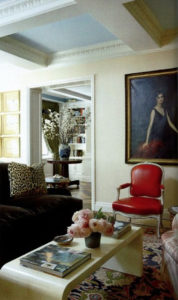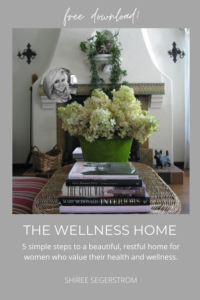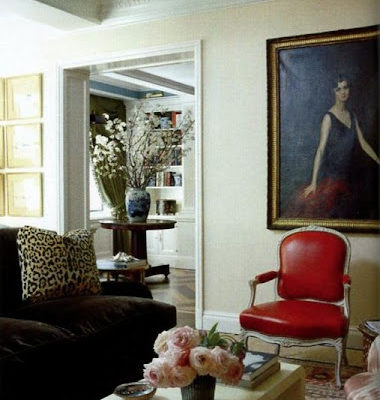Hanging Pictures in the Home
joy of nesting
Hanging pictures in the home can be a daunting task, I admit it. It’s one of the hardest things I do. Hallways and stairs naturally have lots of empty wall space, and most people don’t know what to do with them.
Here are my steps for hanging framed arrangements of prints, family portraits, mirrors, and even shadow boxes.

If You Don’t Have a Collection of Framed Prints or Family Portraits
If you don’t have a collection of framed prints or family portraits, opt for two to three large, framed coordinating prints rather than small ones. For a ten-foot-wide wall, you can easily do two to three matching framed prints, or two mirrors sized around 28” wide x 43” high.
Hanging Pictures in the Home
Step 1: Gather Your Tools and Materials
well.
Tape Measure: Use a good quality one over 20 feet long.
Pencil and Hammer: Essentials for marking and nailing.
Picture Hanging Kit: I prefer the nice brass ones.
Spackle and Touch-Up Paint: For filling mistake holes.
Molly Bolts and Hand Drill: Needed for heavier pieces.
Step 2: Gather Your Pictures
Bring out all your pictures, portraits, mirrors, etc. For example, in my previous home, I mixed family portraits, black and white photography, mirrors, a shadow box of civil war pieces, and some artwork. It worked well visually because I used coordinating items.
Step 3: Lay Out Your Pieces
On a large empty floor space, start laying out your pieces. Begin with the largest pieces in the center of your arrangement. This creates a foundation for the other smaller pieces. Work from left to right, high to low, just like reading a book. Once you’ve found an arrangement you love, the hard part begins. Measuring.
place them in the center of your arrangement. If they’re going up a staircase you have the option of putting the big pieces parallel, side by side or stair stepping them up the stairs.
Step 4: Hanging Your Pieces
You are going to hang your pieces one at a time, leaving the rest in position on the ground. But before you lift or move anything, make sure you jot down the distance to its neighbor! And again, hang the biggest pieces first. You will have to ‘eyeball’ hanging your first piece and you may have to do a few trial-and-error holes, so prepare for that contingency.
Determining the height will be the hardest part.
When you place the first, big pieces don’t place them too low or too high because the rest of the arrangement depends on it. As a general rule I like to place them just a bit higher than eye level. For instance, when you’re standing up close you should have to look up a bit, craning your head about two natural feeling ‘notches’ upward. I hope that makes sense. Bear with me here, like I said this is part art too, so clarity isn’t always easy!
Once the biggest pieces are perfectly placed, you can use them as a point of reference measurement. Things start to get a little easier after this step. Yay!
If you have more than three pieces or if you’re hanging things at heights above eye level it is a great job for your handyman. Allow about 4 to 5 hours at $30 to $45 an hour. Don’t ask or allow him or her to weigh in on how it looks. There will always be nay-sayers, and they will ruin your confidence and make you question your decisions. I say this from experience.
On more than one occasion a well-meaning client will let a neighbor or friend, or adult child attend our consultations without my consent, and it always ends up very unhappy for the client. I have never once had them turn out good. I’ve discovered our best friends seldom like us to make major changes to our home, our make up or hair!
So don’t ruin your joy by letting them weigh in. Trust your gut.
Hang your pieces one at a time, leaving the rest on the ground. Start with the biggest pieces. You might have to do some trial and error with the first piece, so prepare for that. As a general rule, place pieces just a bit higher than eye level. Use the first big pieces as reference measurements for the rest.
Handy Tips for Hanging Pictures in the Home
Handyman Help
If you have more than three pieces or are hanging above eye level, consider hiring a handyman.
Stud Finder
Molly Bolts
Use a hand drill to create a small starter hole, then hammer in the molly. Test the weight of heavy pieces before fully supporting them with the molly.
For using mollies, you will likely need a hand drill. If your walls are plaster, purchase a concrete bit. Start with your pencil mark, then using any old nail, nail a small hole as a starter hole. Don’t hammer the nail so far in that you can’t wiggle it back out again. Remove the nail and drill a hole using a drill bit a little smaller than your molly.
Separate the molly from the screw and hammer the molly into the prepared hole. Then screw the screw in till it’s firmly in place, leaving enough screw exposed for your picture frame wire. For heavy mirrors, please use caution.
Test the weight of the piece by allowing only a small portion of the weight to be supported by the molly at first. If the piece moves at all, you know it’s not secure. I’ve hung many heavy mirrors in my day and have never had one fall but to be safe please keep kids and pets away from them altogether.
My Sweet Tape Measure Hack
I learned this trick from my fantastic window treatment installer.
1. Hold the Tape: Hold the tape measure in your right hand and pull out about 6 feet.
2. Extend and Bend: Keep it extended with your right pointer finger and bend the tape.
3. Measure Securely: Place it firmly against the wall and hold the tail with your right big toe. Secure the tape against the wall with your left hand and pull the tape up.
Download Your Free Gift
To get started on a home where you feel healthy, happy and connected grab my complimentary design and wellness download, The Wellness Home.
It’s the prettiest little book. It’s a quick read with super easy design solutions that help you lead a beautiful, healthier lifestyle at home, plus my 3-to-5 Things Framework that gives you step by step actions to get started and stay on track.
That’s it for today. Thank you for stopping by!
Shiree’
What is Wellness Design? Learn more about the connection between your wellbeing and your home, featured on Deirdre Fitzpatrick’s Dying to Ask Podcast. And if you’d like to dive deeper into this topic, check out my blog post, “Hiring an Interior Designer”.

